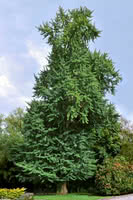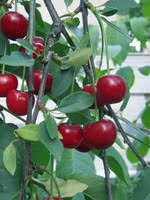Mon-Fri 9am - 5pm Mountain time
Ginkgo Biloba vs Sour Cherry
Ginkgo biloba
Prunus cerasus
NOT AVAILABLE THIS SEASON - MIGHT RETURN
COMING SOON
(new stock expected: fall of 2025)
The Ginkgo Biloba is regarded as one of the most distinctive and beautiful of all the deciduous trees, and has remained genetically unchanged for millions of years. Its beautifully fan-shaped leaves develop a clear yellow colour in fall. Graceful and attractive year-round, Ginkgo is the perfect conversation starter in your yard.
Sour Cherry is a self-fertile and cold hardy cherry tree. Not to be confused with sweet cherries, sour cherries are the only cherries that are successfully grown in prairie climates.
Sour Cherry is ideal for cooking, preserves, or for making juices and jams, while sweet cherries are preferred for fresh eating. While we can't confirm claims of sour cherries medical benefits, studies have shown that sour cherries contain anti-inflammatory properties and can help regulate sleep patterns.
Sour Cherry flowers emerge in April-May with fruit ripening in June-July. This variety prefers well-drained soil and does not like any standing water. If you're looking to create an inexpensive edible hedge, consider Sour Cherry.
This Sour Cherry is produced from seed and is not a clonally reproduced selection like the Evans, Rose, or Montmorency.
Ginkgo Biloba Quick Facts
Sour Cherry Quick Facts
Toxicity: Uncooked nuts in large quantities

